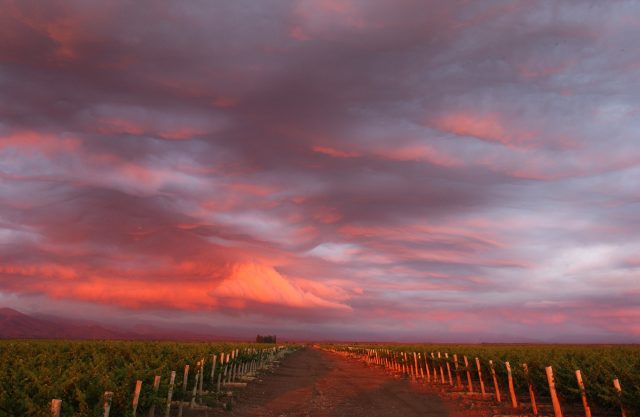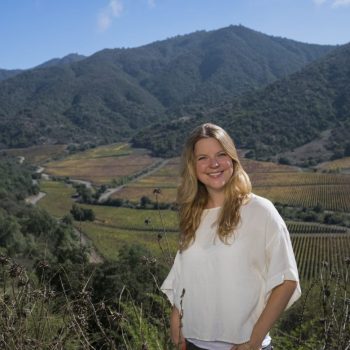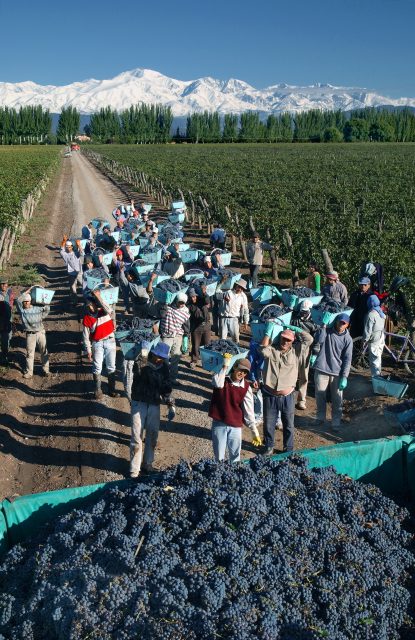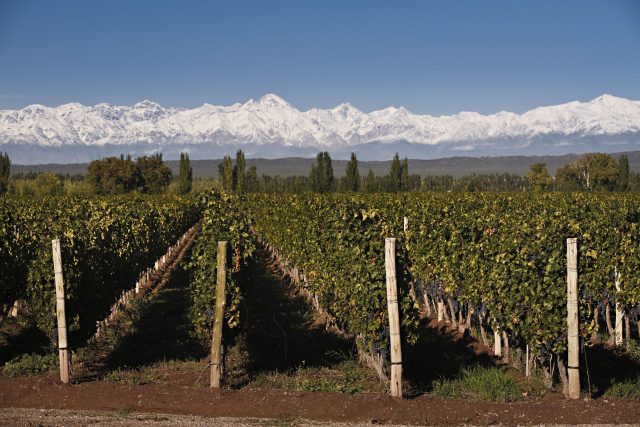This website uses cookies so that we can provide you with the best user experience possible. Cookie information is stored in your browser and performs functions such as recognising you when you return to our website and helping our team to understand which sections of the website you find most interesting and useful.
Why Argentina deserves a place in your wine cellar
Argentina might be planted firmly in the new world, but the meticulous approach of its winemakers and growing confidence in their craft has seen it propelled into the world of fine wine at impressive speed.

Soil analysis, parcel selection and understanding of terroir, particularly at higher altitudes, has advanced at lightning speed across Argentina since the mid 2000s. What old world regions have done over hundreds of years, Argentina has done in just two decades. The speed of discovery and education has been phenomenal. The over extracted, jammy wines of the 1990s to early 2000s are long gone. In their place are precise, restrained and terroir-driven wines – high-end wines that are more than capable of holding their own on the fine wine market, with critics’ scores to match.
Producers like Catena, Zuccardi and Luigi Bosca have long worked at the high end of Argentine wine, but there’s also relative newcomers (founded in the late 90s to early 2000s) such as Achaval Ferrer, Susana Balbo Wines, Mendel and Cheval des Andes in Mendoza, Bodegas Noemia and Bodegas Chacra in the southern reaches of Patagonia, and Colomé and El Porvenir in the northern region of Salta. These producers, and many more, are building the foundations of Argentina’s fine wine future, not only raising the quality of all Argentine wines but proving their ageing potential too.

“The shift in quality and style of Argentine wine over the last decade is really the result of a focus on terroir – winemakers looking at what they have beneath the vines, within the vines and in the climate all around the vines, and trying to express that in the most transparent and authentic way possible,” says Amanda Barnes, author of The South American Wine Guide.
“There’s a much greater purity to the wines today, and a focus on freshness, fruit expression and length with precision, which translates into distinctive and enjoyable wines to explore.”
Rebecca Palmer, wine buyer at Corney & Barrow, observes a similar trend, particularly in relation to the way we talk about Argentine wine regions. “What was once Mendoza, then Uco becomes a conversation about Altamira, Chacayes, Gualtallary and within these areas, specific parcels that have certain qualities because of their soil profile, altitude and so on.”
A change in style and winemaking has also allowed Argentine wines to shine brighter. With greater knowledge, vineyards are managed with greater precision and care, allowing winemakers to express terroir more effectively. Less alcohol, lighter extraction and more subtle oak, says Palmer, has also resulted in a “greater sense of freshness and balance”, when combined with more experimentation with different vessels such as concrete eggs, larger and older oak barrels.
“There is significant research and investment from wineries that has allowed winemakers to experiment with micro-vinifications, techniques from micro-ox and post-fermentation maceration,” she says. “We have seen a lot of this approach from the wineries we work with, such as Achaval Ferrer and Ruca Malen, but also others who are pushing boundaries and disrupting the status quo,” winemakers such as Matias Riccitelli and the Michelini brothers, amongst others.
Outside influence has been another factor. “This doesn’t only include consultant winemakers but also Argentine winemakers doing vintages outside; and using this greater knowledge to reflect on their own terroir and varieties has brought the quality along significantly and influenced viticulture and winemaking,” explains Barnes. “Argentine winemakers’ openness to share information with each other has also brought the category up as a whole.”

Certainly, foreign consultant-led projects like Michel Rolland’s Clos de los Siete in the Uco Valley and Paul Hobbs’ Vina Cobos, which has vineyards across Luján de Cuyo and Uco Valley, have raised the profile of fine Argentine wine. Paul Hobbs’ Cobos Marchiori is one of Argentina’s most expensive single vineyard Malbecs, with 1999 its first vintage, and today the Marchiori Vineyard in Perdriel, Luján de Cuyo, also produces Cabernet Sauvignon and Chardonnay.
AGEING POTENTIAL
One hurdle that only time will solve is proving the ability for Argentine wines to age well. There are examples of fantastic wines made pre-1990s, before a trend for over extraction and high alcohol temporarily took hold. Palmer points toward a 1982 Malbec from Lagarde she tasted recently that “was more akin to a Burgundian Pinot in its acid-tannin structure and dimension”. While Barnes urges us to look back at the old vintages (30 – 50 years old) of Lopez and Weinert, which she says are “incredible”. But these wines are few and far between and generally stashed away in winery cellars, not on the open market.
Since the mid to late 2000s, winemakers have been consistently pursuing a style and quality of wine with cellaring and ageing potential in mind – more restrained winemaking combined with a focus on terroir and in many cases high altitude. It means that the ageing potential of these wines are only now beginning to be seen, some 15-20 vintages in. “The quality revolution and change of winemaking only really happened two decades ago so we can’t taste that potential yet, but I’m sure it’s there,” adds Barnes. “I personally hold back my Argentine wines, especially the good Semillon and Chardonnay, as long as I can resist.”
Achaval Ferrer and Cheval des Andes are two good examples, both founded in the late 90s.
Cheval des Andes, a collaboration between Terrazas de los Andes and Pierre Lurton of Bordeaux’s Cheval Blanc, was founded with the aim of bringing Cheval Blanc’s winemaking philosophy – focusing on cellaring potential – to Argentina. Its label is a blend of Malbec with Cabernet Sauvignon and Petit Verdot grown in Las Compuertas, Lujan de Cuyo, with 2001 the first vintage.
Achaval Ferrer is known for its single vineyard Bordeaux-inspired red blends of Malbec, Cabernet Sauvignon, Merlot and Cabernet Franc from three vineyard sites: the Finca Bella Vista, Finca Mirador and Finca Altamira, alongside its Quimera label. In 2011 its 2009 Altamira Malbec received 99 points from The Wine Advocate – the highest score achieved by a South American wine at the time.
HIGH SCORING WINES

The quality of Argentine wine is not just anecdotal. Several Argentine producers now trade on famed negociant platform La Place de Bordeaux, including Catena and Cheval des Andes, while 95+ point scores are now commonplace. This year Zuccardi Wines achieved a 100-point score from Robert Parker’s The Wine Advocate for the second year in a row for its Finca Piedra Infinita Gravascal 2018 Malbec, produced from a 0.73 ha vineyard in Paraje Altamira in the Uco Valley.
Catena’s Adrianna vineyard, in Gualtallary in the Uco Valley, is responsible for some of its best Malbecs, including the Fortuna Terrae and Mundus Bacillus labels and acclaimed White Bones and White Stones Chardonnays. The 2019 vintage of White Stones received 99 points from The Wine Advocate, and White Bones 98 for the same vintage. While El Enemigo, created by Catena winemaker Alejandro Vigil and Adrianna Catena in 2007, received 100 points from The Wine Advocate for its 2013 El Gran Enemigo Cabernet Franc, also from Gualtallary.
This year Susana Balbo was awarded 95 points from The Wine Advocate for its Nosotros Single Vineyard Nómade Malbec 2018, grown in Paraje Altamira, Uco Valley.
Colomé, in northern Argentina, received 95 points for its 2015 and 2016 vintages of its Altura Maxima Malbec, grown at 3,111 masl.
In the south, Bodega Chacra’s 2017 Cincuenta y Cinco and 2015 Treinta y Dos – both single vineyard Pinot Noirs – gained 97-points from The Wine Advocate. While nearby Bodegas Noemia received 96 points for its 2017 Noemia Malbec.
“We can’t forget the influence of Robert Parker in the evolution of Argentina’s wine styles in the last 20 years,” adds Palmer, citing the “action-reaction” reflex that scores have had on the wider industry. “Now, there seems to be a move away from the so-called ‘international’ style, to the local and specific – terroir.” Reflective of the fact that it has firmly found its feet.
Argentina has evolved beyond recognition over the past two decades – a blink of an eye in winemaking terms. A laser-sharp focus on terroir, parcel selection and restrained winemaking has seen winemakers push to the next level. Argentina is arguably making the best wines in its history right now. Imagine what it could do in another two decades.
Related news
A 'challenging yet surprising' vintage for Centre-Loire in 2024

